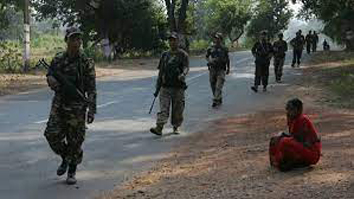Walking on dirt tracks inside a remote dense forest of Keshkal in Chhattisgarh, one is surprised on suddenly hearing the sound of gushing waterfalls, most of which were unexplored till some time back.
Tribals residing in remote villages of this pristine forest, flanked by hills and covered with Sal trees, which had been infamous for Naxal activities, never imagined that these natural water bodies would make the place a sought-after tourist destination and serve as a means of livelihood for them.
Located around 170 km from the state capital Raipur, Keshkal falls in Kondagaon, one of the seven districts of the Bastar region- which is the severely affected by the Left Wing Extremism (LWE).
Bastar is full of natural beauty. People normally visit Chitrakote, the majestic waterfall located in neighboring Bastar district, popularly called the Niagra of India, but other areas like Keshkal are yet to be explored from the tourism point of view, local villager Deepak Netam told PTI.
The initiative taken by the local administration last year to promote tourism involving local tribal communities has now started yielding results, said the 21-year-old tribal, who is a member of one such panel.
Netam hails from Honhed village, located about 15 km from Keshkal, where the sound of 'Katulkasa' waterfall can be heard from a considerable distance.
A number of tribals clad in light green T-shirts, the uniform provided by the administration to the locally raised tourism committee assigned to manage the spot, can be seen in the area.
One member each from all 50 families, mostly belonging to the Gond tribe of Honhed, is part of the Katulkasa waterfall tourism committee and six people are deputed at a time on a rotational basis," said Netam, who passed Class 12 from a state-run Eklavya residential school in Bhairamgarh (Bijapur district).
The tribal, who is also pursuing the Bachelor of Science (BSc) course from a college in Keshkal, said his duty at the waterfall does not affect his studies.
Honhed's deputy sarpanch Atmaram Sori said the committee was constituted in September last year and in the last three months (September, October, November) this year, which was the peak tourist season after the monsoon, it collected over Rs 33,000 as entry fees from visitors.
The committee charges Rs 10 per head from adult tourists and Rs 5 for children, he said, adding that the panel has spent the money in works like road repairs and setting up parking shades.
Till a couple of years back, people knew about Honhed and the big and small waterfalls located in the area, but were reluctant to visit the region fearing Naxals.
Not far from Honhed, two Naxals were killed in a gun battle with security forces in a forest in June last year.
In March this year, Naxals burnt at least 12 vehicles, mostly trucks, engaged in road construction works in Kuyemari village, where 'Kodakal', one of the most picturesque waterfalls of the area, is located.
But, it did not deter tourists from coming to the area, and around 5,000 people visited the waterfall in the last three months, Kuyemari tourism committee head Mahesh Kumar Hidko said.
The district administration along with the forest department decided to put these waterfalls and places of archeological importance on tourism maps, involving local tribals for the management of these spots by forming 'paryatan samitis' (tourism committees) at the local level.
Earlier, the mere mention of the Keshkal forest would bring up images of Maoist violence, but the impression is gradually changing now, Kondagaon Collector Pushpendra Kumar Meena told PTI.
Realising that there can be a vast potential for tourism and livelihood earning, the forest department along with the district administration and local people decided to survey each village for its uniqueness and possibilities, he said.
Around 20 small and big waterfalls, numerous caves and rock paintings were found and properly mapped in the past two years, the official said.
Among the major waterfalls in the area are Kodakal (Kuyemari ), Katulkasa (Honhed), Haathikudum (Nalajhar) and Lingodhara (Limdhara), and each of them has a unique shape, height and size, he said.
Some of the waterfalls like Kuyemari were attracting visitors for the last three-four years after some YouTubers posted its videos, but the footfall was quite less, the collector said.
As not many people from outside were willing to work in the interior areas, village-wise paryatan samitis were formed in consultation with people of the gram panchayat. Local youth in these committees are entirely responsible for managing and maintaining the tourist spot in their village, he said.
A nominal entry fee is collected from people visiting the tourist spot and the money goes directly to the samiti and its members. They, in-turn, provide lifeguard and security services at the site, he said.
Women from local Self Help Groups take care of the food services at some tourist spots and earn for themselves, the official said.
To facilitate the movement of four-wheelers, the dirt tracks have been repaired and a road is being constructed from National Highway no. 30 to Kuyemari, he added.
Lal Bahadur, a Keshkal-based tour operator, said the area was considered dangerous a few years ago, but things have now started changing.
Kuyemari and a few other waterfalls, relatively unknown to the rest of the world, started gaining popularity in 2017 because of the pictures and videos of these water bodies shared on social media by local visitors, he said, adding that tourist footfalls increased since last year.
Kondagaon is known as the 'Shilp Nagri' for its handicraft artists, and soon it will be known as the 'land of waterfalls', he claimed.











